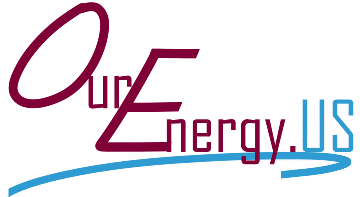The scorching Texas summer heat can be relentless, but that doesn’t mean you have to suffer in a sweltering home or break the bank with high energy bills. By implementing a few smart strategies and making some small adjustments, you can keep your home cool and comfortable while also saving energy. In this article, we will explore various tips and techniques to help you beat the Texas heat and reduce your cooling costs.
How can you keep your home cool while being energy efficient?
Optimize Your Thermostat Settings
A programmable thermostat is an invaluable tool when it comes to keeping your home cool and reducing energy consumption. Set your thermostat to higher temperatures when you’re away or asleep to conserve energy. According to the Department of Energy, raising your thermostat by 7-10 degrees Fahrenheit for 8 hours a day can save you up to 10% on cooling costs. Aim for a comfortable setting around 78 degrees Fahrenheit when you’re at home.
Enhance Insulation
Proper insulation is crucial for maintaining a cool home. It acts as a barrier, preventing the transfer of heat between your home and the outside environment. Inspect your home’s insulation and seal any leaks or gaps to minimize the heat exchange as well-insulated homes require less energy to cool, which can significantly reduce your cooling bills.
Upgrade Your HVAC System
Investing in an energy-efficient HVAC system, such as an Energy Star certified unit, can make a substantial difference in your energy consumption. These systems are designed to use less energy and emit up to 90% less heat compared to older models. Upgrading your HVAC system not only keeps your home cool but also helps you save energy and money in the long run.
Utilize Ceiling Fans
Ceiling fans are a cost-effective solution to circulate cool air and make a room feel 4 to 6 degrees cooler. Unlike air conditioners, fans cool people, not the entire room. By using ceiling fans in conjunction with your air conditioner, you can raise the thermostat setting by a few degrees without sacrificing comfort. Remember to adjust your fan’s direction to rotate counterclockwise in the summer, which helps direct cool air downwards.
Maximize Natural Ventilation
Take advantage of natural ventilation by strategically opening doors and windows during cooler hours, such as early morning and late evening. This allows fresh air to circulate throughout your home, reducing the need for air conditioning. However, be mindful of direct sunlight entering your home, as it can quickly heat up your living spaces. Consider using shades, curtains, or blinds to block out the sun’s rays during the hottest parts of the day.
Maintain Your Cooling System
Regular maintenance of your cooling system is essential for optimal performance and energy efficiency. Clean or replace air filters monthly to ensure proper airflow, as clogged filters restrict air movement and force your cooling system to work harder. Schedule professional HVAC inspections and tune-ups at least once a year to identify any potential issues and keep your system running smoothly.
Reduce Internal Heat Sources
Appliances and electronic devices generate heat, adding to the overall cooling load of your home. To minimize this, turn off or unplug devices when not in use, especially those that produce significant amounts of heat, such as ovens, computers, and TVs. Consider using energy-efficient appliances that produce less heat, and opt for LED lighting, as it emits less heat compared to traditional incandescent bulbs.
Enhance Your Home’s Insulation
In addition to insulating your walls, pay attention to other areas that can impact your home’s cooling efficiency. Ensure your attic is properly insulated to prevent heat from seeping into your living spaces. Seal gaps and cracks around doors and windows to minimize air leakage and keep cool air inside.
Consider a Zoned Cooling System
Zoned cooling allows you to set different temperatures for different areas or zones within your home. This way, you can cool only the rooms that are occupied, avoiding wasted energy on unoccupied spaces. Zoned systems use motorized dampers to control airflow, directing cool air where it’s needed most. Consult with an HVAC professional to determine if a zoned cooling system is suitable for your home.
Embrace Energy-Saving Habits
Simple changes in your daily habits can contribute to energy savings and a cooler home. For example, avoid using heat-generating appliances during the hottest parts of the day, such as laundry machines or dishwashers. Opt for outdoor cooking methods, like grilling, instead of using your oven. By reducing heat sources inside your home, you can alleviate the burden on your cooling system and improve overall comfort.
How can I stay cool without AC in Texas?
Staying cool in Texas without an air conditioning system can be challenging, but there are several strategies you can employ to beat the heat. First, focus on keeping your living space as cool as possible. Close curtains or blinds during the day to block out direct sunlight and insulate your windows with reflective film or shades. Use fans strategically by placing them near open windows to create cross-ventilation and promote air circulation. You can also make your own DIY air conditioner by placing a bowl of ice in front of a fan to create a cooling breeze.
To lower the temperature in your home, minimize heat-generating activities during the hottest parts of the day. Avoid using appliances like ovens, dryers, and dishwashers, as they generate heat. Opt for cooler alternatives like grilling outdoors or air-drying your laundry. Switch to energy-efficient LED lights, as they produce less heat compared to traditional incandescent bulbs.
Want to do the opposite? Well, here is an article on how exactly to heat your home with underfloor heating.
